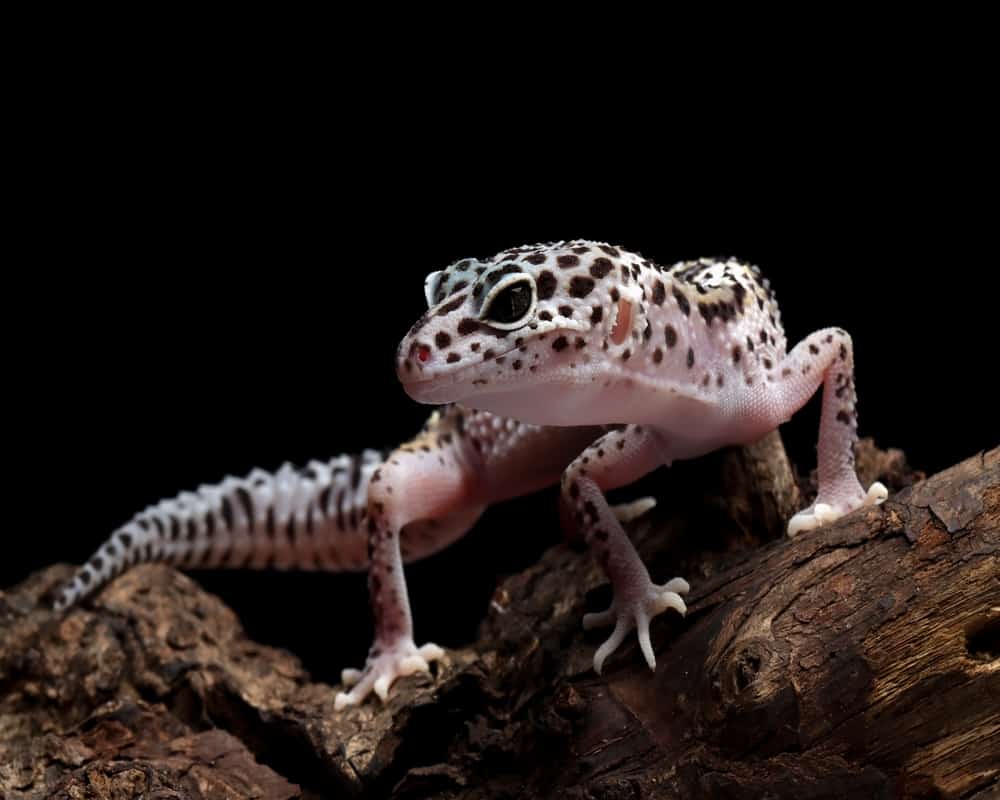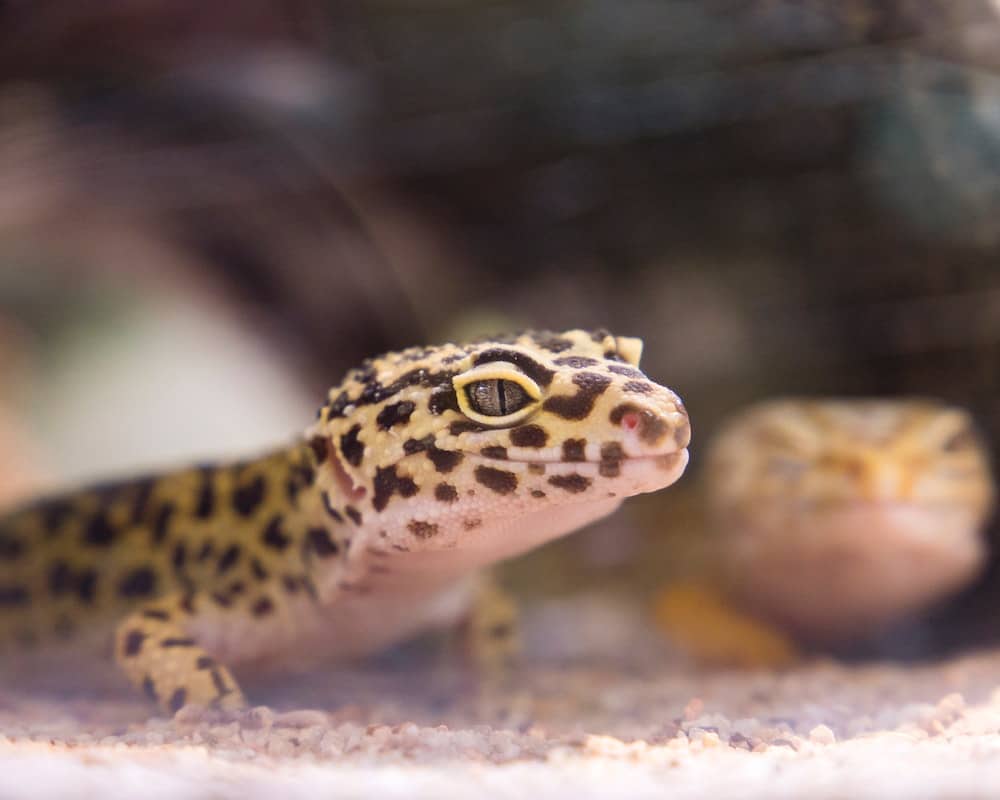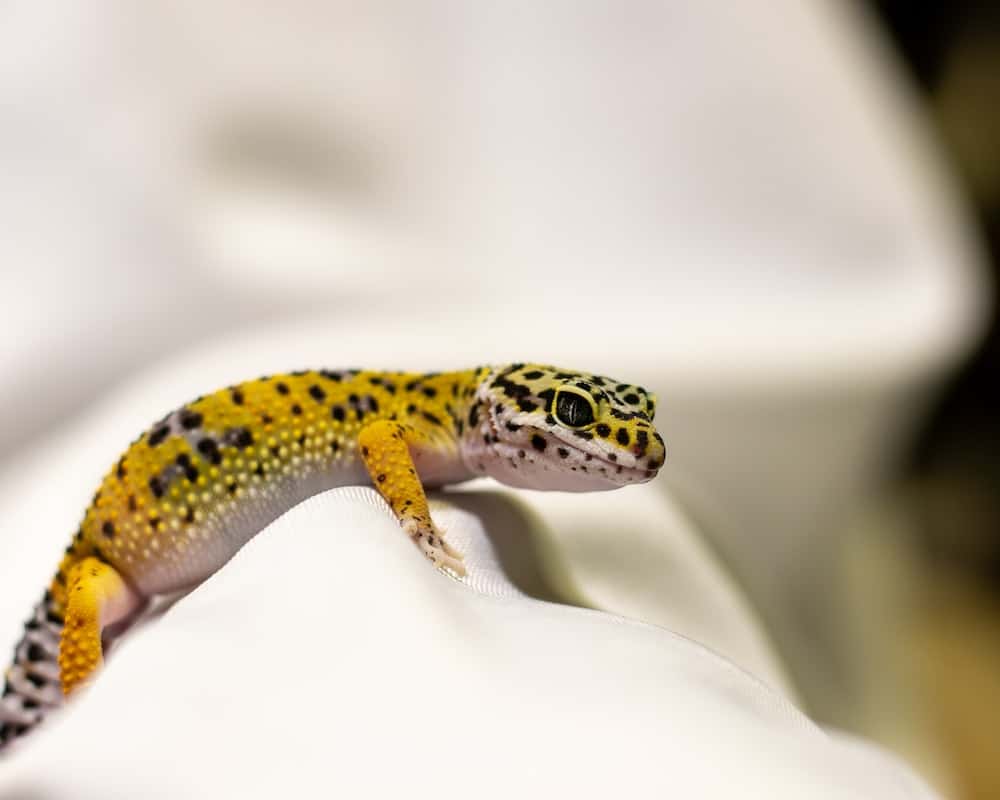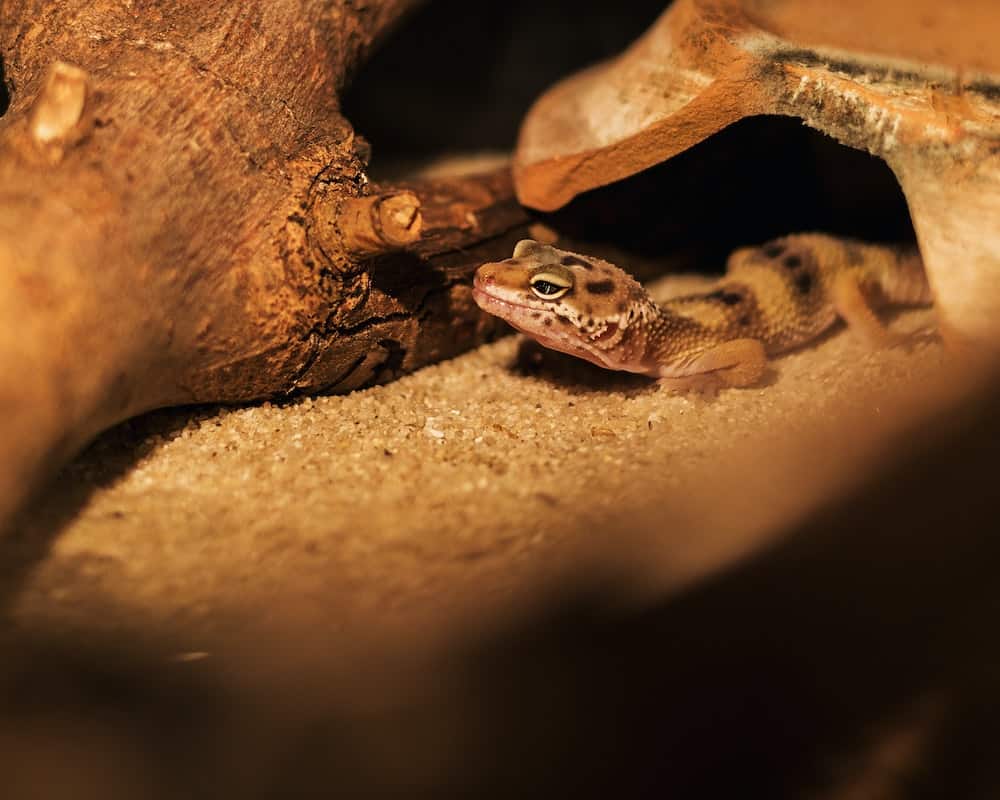Does your pet leopard gecko wag its tail quite frequently? Are you wondering why your pet leopard gecko is wagging its tail? Does it mean anything? What is your gecko trying to tell you? Let’s understand your gecko’s tail wagging.
Generally, leopard geckos do not have a continuous tail-wagging habit like dogs do. But when they wag their tail, they try to communicate through that movement. The speed or direction in which your pet leopard gecko is wagging its tail can say a lot about how your gecko is feeling.
Why do Leopard Geckos Wag Their Tails?
Leopard geckos are generally very docile reptiles known for their unique pattern and behaviors. If you own a leopard gecko, you may have noticed your pet leopard gecko wagging its tail. This is not uncommon.
Leopard geckos communicate through their tail. Most of its body language can be understood through its tail wagging. This is a way that reveals their feelings of excitement, anticipation, or relaxation. They feel it all!
Top 8 Reasons Behind Why Your Pet Leopard Gecko is Wagging Its Tail
Leopard geckos wag their tails for various reasons that can reveal what they are feeling. It is an effective way for them to communicate.
Most times, leopard geckos do not wag their tail at the same speed, it changes at different times. Let’s understand what your pet leopard gecko is feeling with these movements.
- Gentle Side-to-Side Tail Movement
This movement is generally seen when your pet leopard gecko is comfortable and content. It is a gentle movement and can be slow in nature.
This shows that your pet leopard gecko is in a relaxed state and may be seen at times when they are having their basking session.
It serves as a form of thermoregulation in their body, and you may even notice other behaviors, such as stretched limbs or closed eyes, that signify their relaxed state.
- Rapid Tail Wagging
If you notice your pet leopard gecko wagging its tail with rapid movement, it is most likely because it is excited. They generally do this in the company of a leopard gecko of the other gender.
Male and female leopard geckos tend to wag their tail rapidly, but it is most commonly seen that males tend to wag their tails quickly to show interest in the other gender leopard gecko.
This rapid movement can alert the female of a potential mate and may be seen throughout the mating period.
- Vigorous Tail Wagging
Your pet leopard gecko may even wag its tail vigorously when triggered by a prey response. When your gecko is anticipating hunting for food or actively engaged in prey hunting, they tend to wag its tail vigorously.
Even when presented with food, their tail wagging may get vigorous and quick, displaying anticipation and as a feeding response.
- Erratic Tail Wagging
When your pet leopard gecko sees a threat or feels threatened, you may notice an erratic tail-wagging movement. This is like a warning sign that may be observed in a leopard gecko.
It is better for you to stay still and not make any sudden movements. If you can clear the threat, then do so, but otherwise, stay still near its natural habitat till your pet leopard gecko calms down.
- Defence Posture Tail Wagging
This type of tail wagging is when your pet leopard gecko makes an uncomfortable tail wag, which shows it is in defense mode. It may be seen when it is in the presence of an opponent competing for a female gecko or when it is in the presence of an assailant.
Leopard geckos tend to distract their opponents or assert authority with their defensive posture and tail wagging. They distract them by moving their tail defensively and show dominance by lowering their belly and raising their heads. This helps them intimidate their competitors.
They may also show this defensive behavior if you surprise them suddenly while they are not yet familiar with you. In this type of case, it is better to get your pet leopard gecko to recognize you by spending more time with it.
- Continuous Excited Wagging of Tail
This continuous and excited tail wagging is generally seen in young leopard geckos. Especially if they are excited, have energy for active movement, or are playful. This can be observed even when they are eating or hunting.
- Sudden Short-Time Tail Movement
If you hear a loud noise, you tend to jump a little, don’t you? This is the same case with your pet leopard gecko too. Sometimes a sudden environmental change can cause a short time tail movement of your pet leopard gecko.
It is usually to show surprise. It can also be noticed when there is a sudden environmental change in your pet leopard gecko’s enclosure, such as if you shift it or change the enclosure.
- Non-Stop Tail Wagging
A defensive tail wagging for a particular period is normal and generally happens when threatened by another dominant gecko or faced by an opponent. However, if you notice a persistent defensive tail wagging that occurs continuously, this is something to worry about.
This can be due to an uncomfortable environment which is causing your pet leopard gecko a lot of anxiety. You can change its position and see what is reducing this movement. Such as placing it in a new enclosure, changing the companions if it’s new and young, or even changing its position in the enclosure.
You must find the source of the increased stress level, which could result in deteriorating health, tail-dropping, or injury.
Tail Positioning of Leopard Gecko
The position of your pet leopard gecko’s tail tells you a lot about their feelings and what they may be communicating. Here is an easy way to detect your pet leopard gecko’s feelings with the different positions their tails might take.
| Tail Position | Feeling |
| Straight or Raised | Confidence and assertiveness |
| Curved or Curled | Fear or distress |
| Tucked Beneath the Body | Defensive or submissive |
Tail Dropping in Leopard Geckos
It is not usual for a leopard gecko to drop its tail. The natural position of a leopard gecko’s tail is generally held straight out from its body and either extend horizontally or is elevated from the ground. Their tail serves numerous purposes such as fat storage, body balance, and mainly – communication.
So when your gecko has dropped its tail, it indicates extreme stress or threat, which is not a good sign for the leopard gecko. It is a life-saving strategy where the disconnected tail serves as a distraction while it makes its escape.
Since this tail provides so many benefits, such as body balance and fat storage, dropping it comes at a cost. It can take several months for the tail to be regenerated, and it is essential for your pet leopard gecko to receive regular food and stays in a calm environment.
If your pet leopard gecko ends up consuming its dropped tail, don’t be surprised. They sometimes tend to do so to regain their fat stores.
What Should You Do After Your Pet Leopard Gecko Has Dropped Its Tail?
If your pet leopard gecko has dropped its tail, do not panic, as this is their natural life-saving strategy at times of extreme threat or stress. However, your pet leopard gecko may be agitated after a tail loss and will require some time to calm down.
At this time, you should be extra cautious and do your best till your pet leopard gecko regenerates its tail. You should remember a few things that will help your gecko during regeneration.
- If your pet leopard gecko shares its enclosure with other geckos, it is better to isolate it temporarily till it calms down.
- Try and clear away any substances or objects that could potentially graze against its new wound and lead to an infection.
- You can disinfect the tail area with a small cotton swab and a mild disinfectant.
When Should I be Concerned?
There are times when you should be able to tell when your pet leopard gecko is in need of some professional help or is time to find the cause of stress.
If you see your pet leopard gecko wagging its tail unusually excessively, this means that there is cause for concern. This may happen when your pet leopard gecko requires medical attention due to a health issue or discomfort.
It is essential to seek professional help by consulting a veterinarian specializing in reptiles. Also, an overall health checkup will enable you to determine the issue and get it treated as quickly as possible.
Conclusion
If your pet leopard gecko wags its tail, it is trying to communicate with you or is expressing its feelings. There are many ways that they wag their tail that can tell you different things about their feelings.




